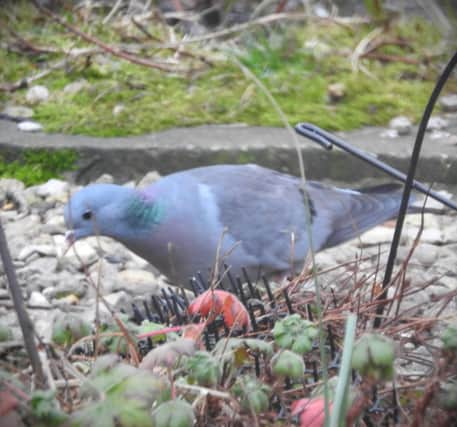On the Wildside: Uncommon dove drops in


A cousin of the woodpigeon, the stock dove is smaller, slimmer, and altogether more delicate, with proportions maybe more like the rather elegant, collared dove. They are easily told apart from a woodpigeon by the lack of the white collar or white on the wings, and the more petite build. Stock doves have a dull grey plumage with black edges to the wings and the tip of the tail, a delicate metallic green sheen on the side of the neck, and pink hue on the breast.
Unlike the now superabundant woodpigeon, the stock dove is still relatively uncommon, perhaps limited by its favoured nesting sites of tree-holes. In autumn and winter, the doves flock up to feed on farmers’ fields and the like, but in springtime they return to woods, parks, and forests, in search of suitable nesting sites. The woods in my local parkland, Graves Park, south Sheffield, provide nesting places in old beech trees with abundant cavities.
Advertisement
Hide AdAdvertisement
Hide AdDuring the breeding season this is a good place to spot stock doves and they nest quite early from March onwards. Whether they compete with the growing population of ring-necked parakeets is presently uncertain, but it has been suggested that they are nesting at slightly different times. Just occasionally in winter the stock doves drop in to the garden but unfortunately, they don’t seem to linger long – unlike their cousins the woodpigeons! The other member of the pigeon family that is about this same size is the feral pigeon, but they are uncommon here and if they call, they don’t stay. Feral pigeons come in ‘Heinz 57’ varieties, but the wild type (rock dove) can be marked in a superficially similar way to a stock dove but without the pink breast, less black, and a bright white rump that is very distinctive.
Professor Ian D. Rotherham, researcher, writer & broadcaster on wildlife & environmental issues, is contactable on [email protected]; follow Ian’s blog (https://ianswalkonthewildside.wordpress.com/) and Twitter @IanThewildside